A Disturbed Voussoir Beam Structure Mechanical Model and Its Application in Feasibility Determination of Upward Mining
Abstract
:1. Introduction
2. The DVBS Model of Interburden Strata in Upward Mining
2.1. The VBS and Its Characteristics in Upward Mining
2.1.1. The VBS in Interburden Strata
2.1.2. New Characteristic of the VBS in Upward Mining—Disturbance
2.2. Establishment of the DVBS Model
2.3. Solution of the Model
2.4. Stability Condition and Analysis of the Model
2.4.1. Condition for Rotation Instability
2.4.2. Analysis of Rotation Instability
- Relationship between DLDC and Horizontal Thrust
- 2.
- Effect of the Lump Rate on the Rotation Instability
- 3.
- Effect of the Disturbance Load on the Rotation Instability
2.4.3. Condition for Sliding Instability
2.4.4. Analysis of Sliding Instability
- Effect of the Lump Rate on Sliding Instability
- 2.
- Effect of Disturbance load on the Sliding Instability
3. Determination Method for Upward Mining Based on Stability of the DVBS
3.1. Proposal of the Method
3.2. Application of the Method
3.2.1. Engineering Background
3.2.2. Feasibility Determination for Upward Mining
3.2.3. Comparison with Traditional Determination Methods
4. Stability Simulation of Interburden Strata Structures in Upward Mining
4.1. Simulation Program
4.2. Evolution of Interburden Strata Structures
4.2.1. Result of Physical Simulation
4.2.2. Result of Numerical Simulation
5. Conclusions
- Together, the DLC and the DLDC form the disturbance factor in upward mining, which affects the stability of the DVBS. There are two mechanisms of instability in the DVBS during upward mining: rotation instability and sliding instability. When the disturbance load crosses the key blocks of the DVBS, the DVBS is most likely to experience sliding instability. When the disturbance load is entirely applied to the key blocks of the DVBS, rotation instability is more likely to occur.
- Using the proposed method, it is determined that the 7.5 m limestone in the interburden strata structures is the primary load-bearing stratum, and its disturbance factor in upward mining is 2.14, which is much smaller than the critical value of 4.44 for rotation instability, indicating that rotation instability will not occur. The critical friction coefficient of this DVBS is 1.22, which is close to the upper limit of the empirical range of friction coefficients from 0.6 to 1.24, indicating a low probability of sliding instability. Therefore, it is determined that the interburden strata structures are stable and upward mining can be conducted in coal seam No. 7. The results obtained using this method differ from those obtained using the ratio value method but are consistent with the results obtained using the statistical method, “three-zone” method, and balanced surrounding rock method.
- Simulation results show that upward mining would cause the sinking, rotation, and compaction of interburden strata structures. After upward mining in coal seam No. 7, the key blocks of the interburden strata structures rotated by 0.2° to 1.1°, with a maximum subsidence of 500 mm and a maximum separation compaction of 310 mm. Although there was movement in the interburden strata structures, it remained stable, further verifying the accuracy and applicability of this new method.
Author Contributions
Funding
Data Availability Statement
Acknowledgments
Conflicts of Interest
References
- Zhang, Y.; Feng, G.; Zhang, M.; Ren, H.; Bai, J.; Guo, Y.; Jiang, H.; Kang, L. Residual coal exploitation and its impact on sustainable development of the coal industry in China. Energy Policy 2016, 96, 534–541. [Google Scholar] [CrossRef]
- Liu, Y.; Cheng, J.; Jiao, J.; Meng, X. Feasibility study on multi-seam upward mining of multi-layer soft-hard alternate complex roof. Environ. Earth Sci. 2022, 81, 424. [Google Scholar] [CrossRef]
- Marinina, O.; Nechitailo, A.; Stroykov, G.; Tsvetkova, A.; Reshneva, E.; Turovskaya, L. Technical and Economic Assessment of Energy Efficiency of Electrification of Hydrocarbon Production Facilities in Underdeveloped Areas. Sustainability 2023, 15, 9614. [Google Scholar] [CrossRef]
- Ma, L.; Wang, L.; Zhang, D.; Liu, Y.; Liu, J.; Zhang, T.; OuYang, G. Application and Study on Feasibility of Near Distance Coal Seam Group Ascending Mining. J. Hunan Univ. Sci. Technol. (Nat. Sci. Ed.) 2007, 22, 1–5. [Google Scholar]
- Zhang, H.; Han, J.; Hai, L.; Li, M.; Qiao, H. Study on closed multiple-seam in the ascending mining technology. J. Min. Saf. Eng. 2013, 30, 63–67. [Google Scholar]
- Wu, X.; Wang, J.; Chen, S.; Zhang, Y.; Bu, Q. Regulation principle and stability control of plastic zone in repeated mining roadway. Rock Soil Mech. 2022, 43, 205–217. [Google Scholar] [CrossRef]
- Ellenberger, J.L.; Chase, F.E.; Mark, C. Using Site Case Histories of Multiple Seam Coal Mining to Advance Mine Design. In Proceedings of the 22nd International Conference on Ground Control in Mining, Morgantown, WV, USA, 5–7 August 2003. [Google Scholar]
- Liu, T. The possibility of using the upward minging method. J. China Coal Soc. 1981, 1, 18–29. [Google Scholar]
- Yavuz, H. An estimation method for cover pressure re-establishment distance and pressure distribution in the goaf of longwall coal mines. Int. J. Rock Mech. Min. Sci. 2004, 41, 193–205. [Google Scholar] [CrossRef]
- Rashed, G.; Slaker, B.; Murphy, M. Exploration of Limestone Pillar Stability in Multiple-Level Mining Conditions Using Numerical Models. Min. Metall. Explor. 2022, 39, 1887–1897. [Google Scholar] [CrossRef]
- Gilbride, L.J.; Agapito, J.F.T.; Hollberg, K.F. Time-dependent stability implications for planned two-seam mining at the OCI Wyoming, LP, Big Island trona mine. In Proceedings of the 38th US Rock Mechanics Symposium (DC Rocks 2001), Washington, DC, USA, 7–10 July 2001; pp. 1539–1546. [Google Scholar]
- Zhang, K. Remining coal seam left in caving zone. Coal Min. Technol. 1999, 1, 16–17+62. [Google Scholar]
- Peng, S. Coal Mine Ground Control, 1st ed.; John Wiley & Sons Inc.: Hoboken, NJ, USA, 1978; pp. 37–44. [Google Scholar]
- Wu, B.; Deng, Z.; Feng, Y.; Li, F. Analysis of the influence of interlayer rock on ascending mining under special conditions. J. China Coal Soc. 2017, 42, 842–848. [Google Scholar] [CrossRef]
- Wu, X.; Wang, S.; Tian, C.; Ji, C.; Wang, J. Failure mechanism and stability control of surrounding rock of docking roadway under multiple dynamic pressures in extrathick coal seam. Geofluids 2020, 2020, 8871925. [Google Scholar] [CrossRef]
- Wu, X.; Liu, H.; Li, J.; Guo, X.; Lv, K.; Wang, J. Temporal-spatial evolutionary law of plastic zone and stability control in repetitive mining roadway. J. China Coal Soc. 2020, 45, 3389–3400. [Google Scholar] [CrossRef]
- Suchowerska, A.M.; Merifield, R.S.; Carter, J.P. Vertical stress changes in multi-seam mining under supercritical longwall panels. Int. J. Rock Mech. Min. Sci. 2013, 61, 306–320. [Google Scholar] [CrossRef]
- Feng, G. Study on the Theory and Its Application of Upward Mining of Left-Over Coal. Ph.D. Thesis, Taiyuan University of Technology, Taiyuan, China, 2011. [Google Scholar]
- Feng, G. The Theory and Its Practice of the Upward Mining of the Left-Over Coal, 1st ed.; China Coal Industry Publishing House: Beijing, China, 2010; pp. 55–67. [Google Scholar]
- Jiang, Y.; Yang, Y.; Ma, Z.; Li, Y. Breakage mechanism of roof strata above widespread mined-out area with roadway mining method and feasibility analysis of upward mining. J. China Coal Soc. 2016, 41, 801–807. [Google Scholar] [CrossRef]
- Malan, D. Manuel Rocha Medal Recipient Simulating the time-dependent behaviour of excavations in hard rock. Rock Mech. Rock Eng. 2002, 35, 225–254. [Google Scholar] [CrossRef]
- Lyashenko, V.I.; Andreev, B.; Dudar, T. Substantiation of mining-technical and environmental safety of underground mining of complex-structure ore deposits. Min. Miner. Depos. 2022, 16, 43–51. [Google Scholar] [CrossRef]
- Pappas, D.M.; Mark, C. Behavior of Simulated Longwall Gob Material, 1st ed.; Bureau of Mines, US Department of the Interior: Washington, DC, USA, 1993; Volume 9458, pp. 46–55.
- Bakun-Mazor, D.; Hatzor, Y.H.; Dershowitz, W.S. Modeling mechanical layering effects on stability of underground openings in jointed sedimentary rocks. Int. J. Rock Mech. Min. Sci. 2009, 46, 262–271. [Google Scholar] [CrossRef]
- Brady, B.H.; Brown, E.T. Rock Mechanics: For Underground Mining; Springer Science & Business Media: Berlin/Heidelberg, Germany, 2006. [Google Scholar]
- Qian, M.; Miao, X.; He, F. Analysis of key block in the structure of voussoir beam in longwall mining. J. China Coal Soc. 1994, 32, 557–563. [Google Scholar]
- Qian, M.; Xu, J.; Wang, J.; Wu, Y. Rock Pressure and Strata Control, 3rd ed.; Publishing House of China University of Mining and Technology: Xuzhou, China, 2020; pp. 71–104. [Google Scholar]
- Song, Z. Practical Ground Pressure Control, 1st ed.; China University of Mining and Technology Press: Xuzhou, China, 1988; pp. 32–44. [Google Scholar]
- Liu, C.; Li, H.M.; Mitri, H.; Jiang, D.J.; Li, H.G.; Feng, J.F. Voussoir beam model for lower strong roof strata movement in longwall mining—Case study. J. Rock Mech. Geotech. Eng. 2017, 9, 1171–1176. [Google Scholar] [CrossRef]
- Li, Z.; Xu, J.L.; Ju, J.F.; Zhu, W.B.; Xu, J.M. The effects of the rotational speed of voussoir beam structures formed by key strata on the ground pressure of stopes. Int. J. Rock Mech. Min. Sci. 2018, 108, 67–79. [Google Scholar] [CrossRef]
- Vervoort, A. Long-term impact of coal mining on surface movement: Residual subsidence versus uplift. Min. Rep. Glückauf 2020, 156, 136–141. [Google Scholar]
- Newman, D.; Hutchinson, A.J.; Mason, D.P. Tensile fracture analysis of a thin Euler-Bernoulli beam and the transition to the voussoir model. Int. J. Rock Mech. Min. Sci. 2018, 102, 78–88. [Google Scholar] [CrossRef]
- Zhang, H. Study and Application on the Distribution Law of Old Goaf Residual Cavity and Void. Ph.D. Thesis, China University of Mining & Technology, Xuzhou, China, 2014. [Google Scholar]
- Burtan, Z.; Chlebowski, D. The Effect of Mining Remnants on Elastic Strain Energy Arising in the Tremor-Inducing Layer. Energies 2022, 15, 6031. [Google Scholar] [CrossRef]
- Smolinski, A.; Malashkevych, D.; Petlovanyi, M.; Rysbekov, K.; Lozynskyi, V.; Sai, K. Research into Impact of Leaving Waste Rocks in the Mined-Out Space on the Geomechanical State of the Rock Mass Surrounding the Longwall Face. Energies 2022, 15, 9522. [Google Scholar] [CrossRef]
- Sidorenko, A.A.; Dmitriev, P.N.; Alekseev, V.Y.; Sidorenko, S.A. Improvement of technological schemes of mining of coal seams prone to spontaneous combustion and rock bumps. J. Min. Inst. 2023, 1–13. [Google Scholar] [CrossRef]
- Zhai, Y.; Kang, L.; Zhu, D. Research on mechanics property of plane contact block structure. J. China Coal Soc. 2003, 28, 241–245. [Google Scholar]
- Li, H. Physical Simulation of Ground Pressure, 1st ed.; Publishing House of China University of Mining and Technology: Xuzhou, China, 1988; pp. 83–107. [Google Scholar]



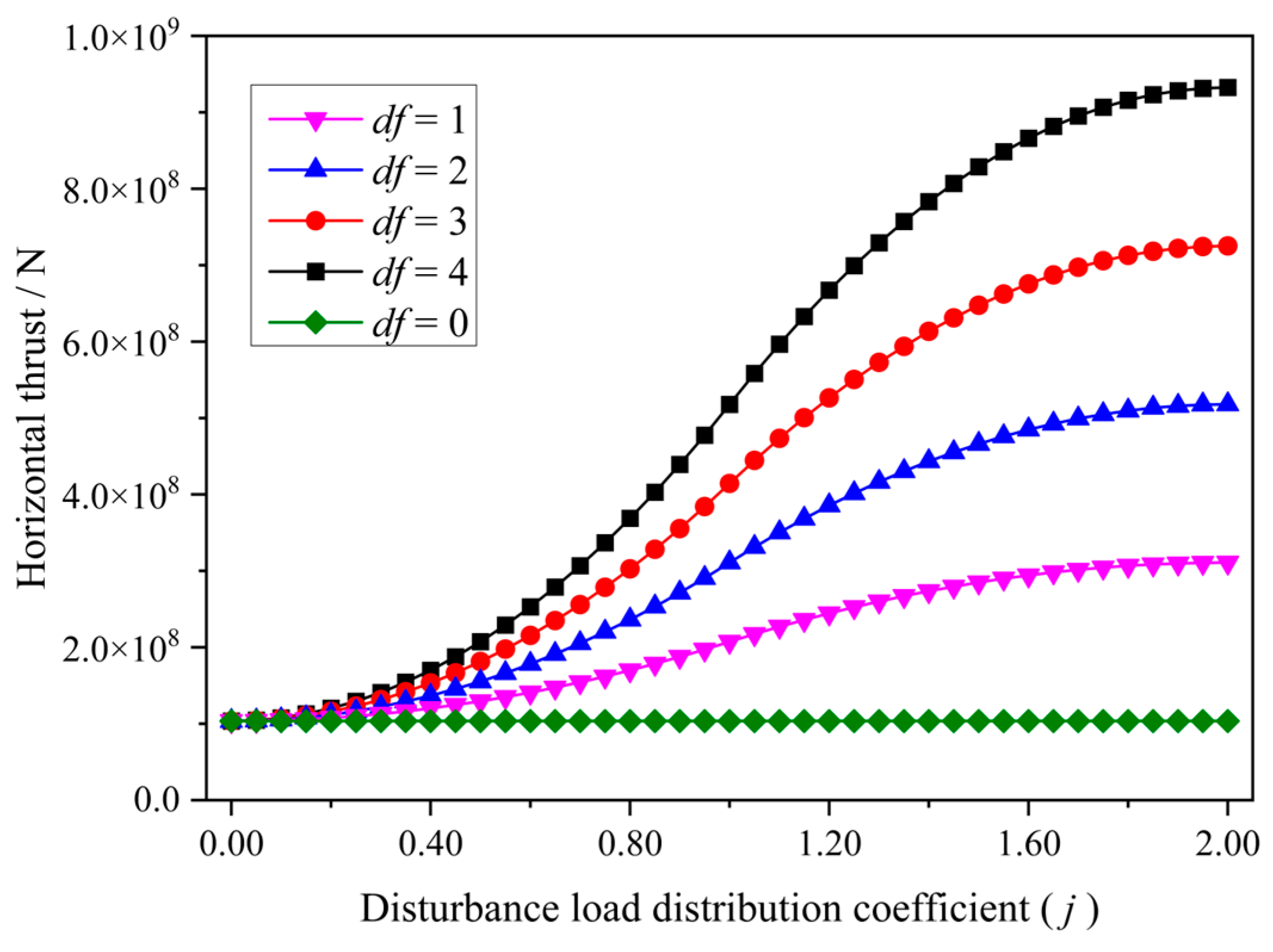

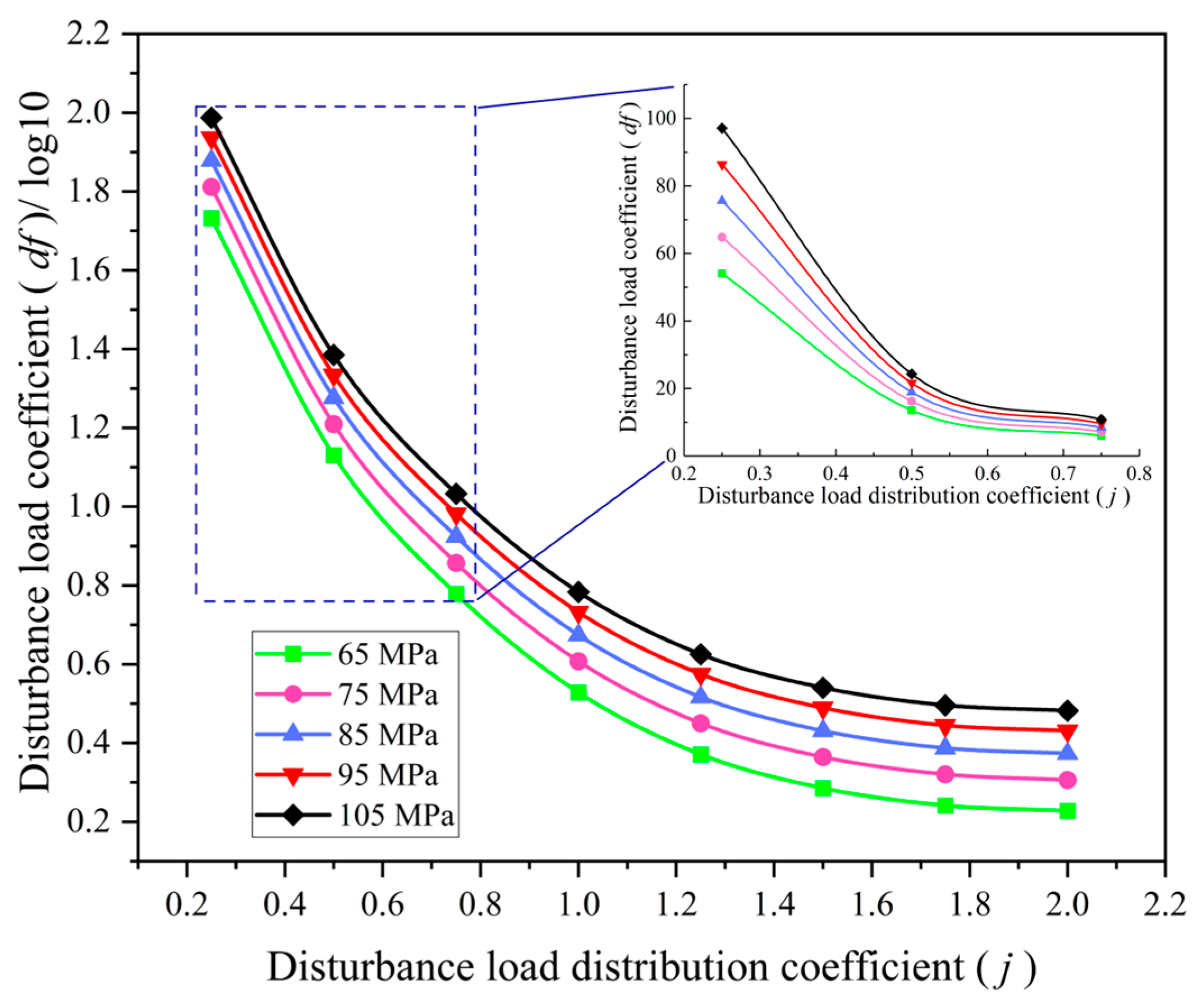
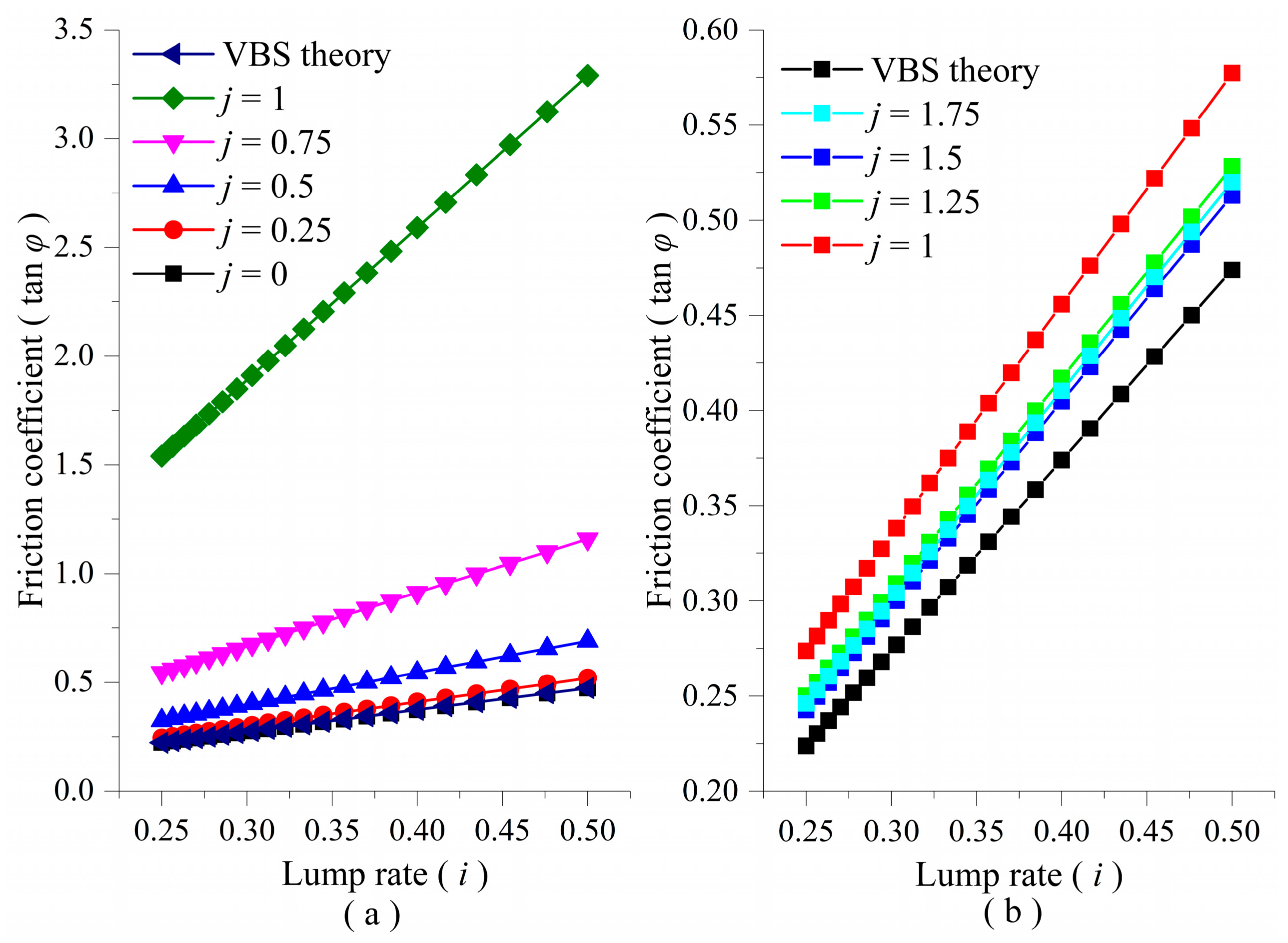
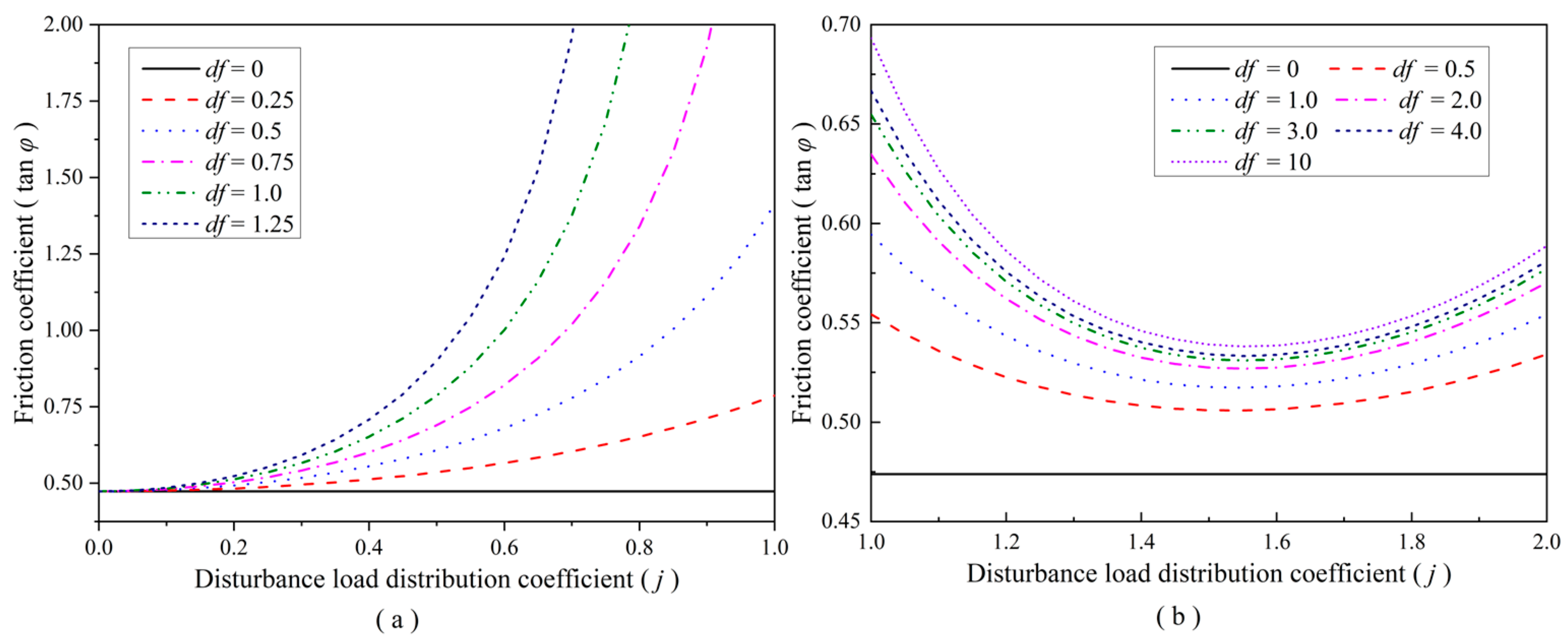
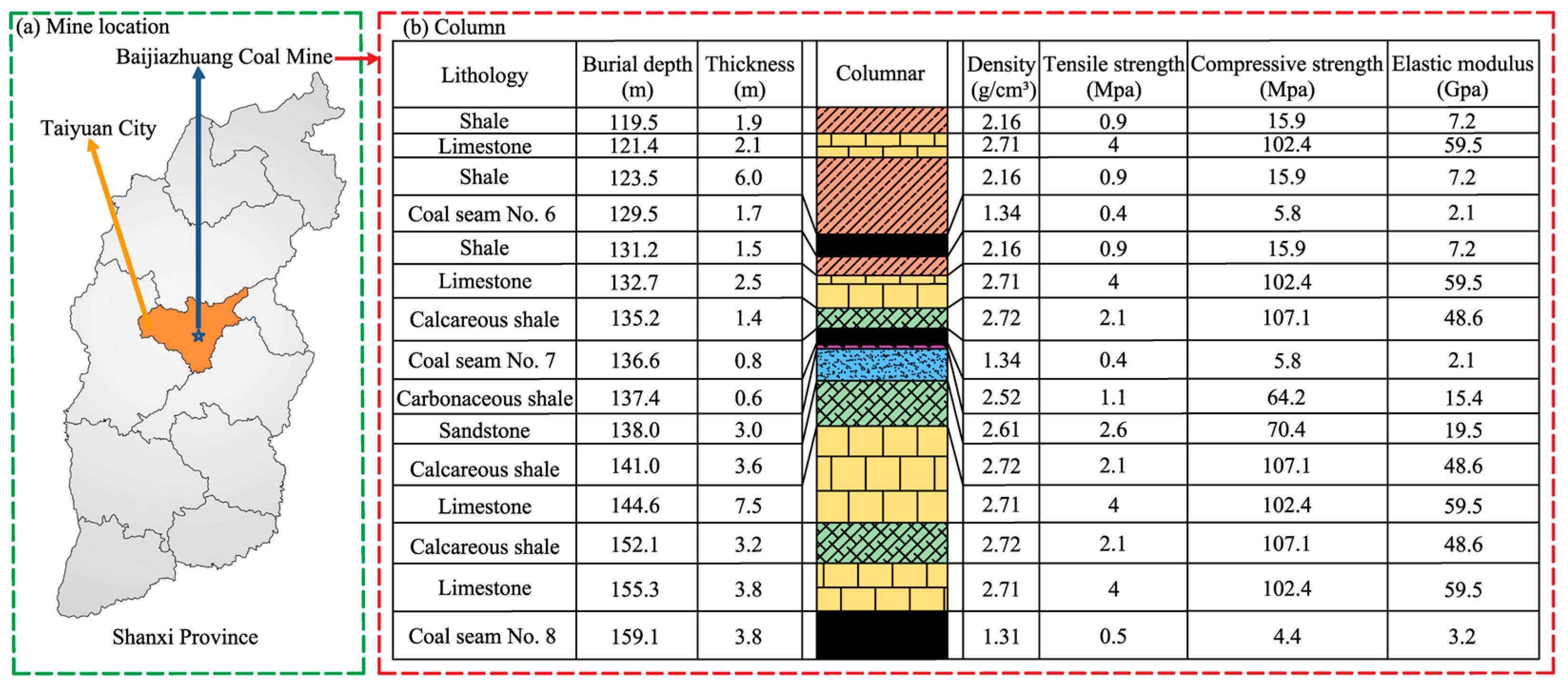

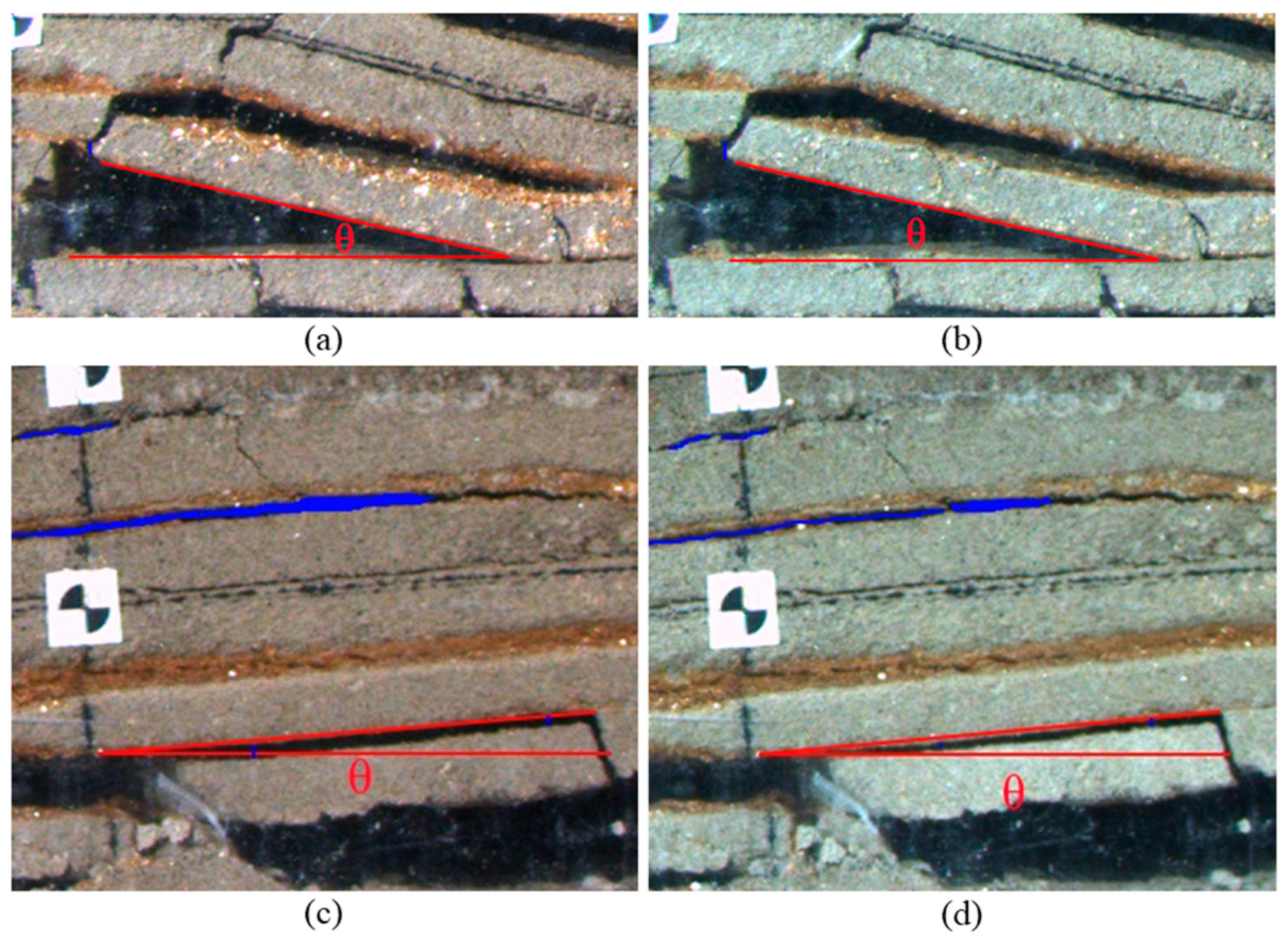

Disclaimer/Publisher’s Note: The statements, opinions and data contained in all publications are solely those of the individual author(s) and contributor(s) and not of MDPI and/or the editor(s). MDPI and/or the editor(s) disclaim responsibility for any injury to people or property resulting from any ideas, methods, instructions or products referred to in the content. |
© 2023 by the authors. Licensee MDPI, Basel, Switzerland. This article is an open access article distributed under the terms and conditions of the Creative Commons Attribution (CC BY) license (https://creativecommons.org/licenses/by/4.0/).
Share and Cite
Zhang, Y.; Wang, Y.; Cui, B.; Feng, G.; Zhang, S.; Zhang, C.; Zhang, Z. A Disturbed Voussoir Beam Structure Mechanical Model and Its Application in Feasibility Determination of Upward Mining. Energies 2023, 16, 7190. https://doi.org/10.3390/en16207190
Zhang Y, Wang Y, Cui B, Feng G, Zhang S, Zhang C, Zhang Z. A Disturbed Voussoir Beam Structure Mechanical Model and Its Application in Feasibility Determination of Upward Mining. Energies. 2023; 16(20):7190. https://doi.org/10.3390/en16207190
Chicago/Turabian StyleZhang, Yujiang, Yining Wang, Bingyuan Cui, Guorui Feng, Shuai Zhang, Chunwang Zhang, and Zhengjun Zhang. 2023. "A Disturbed Voussoir Beam Structure Mechanical Model and Its Application in Feasibility Determination of Upward Mining" Energies 16, no. 20: 7190. https://doi.org/10.3390/en16207190




